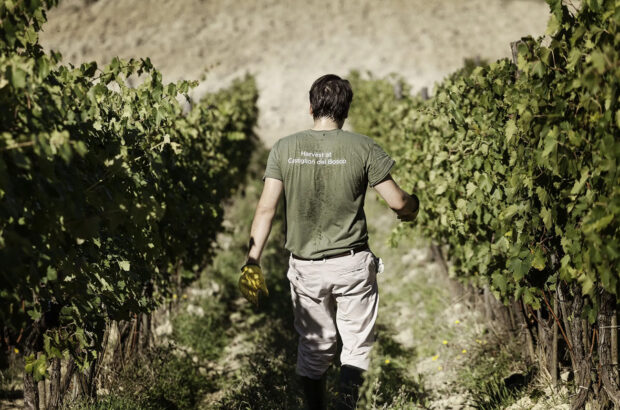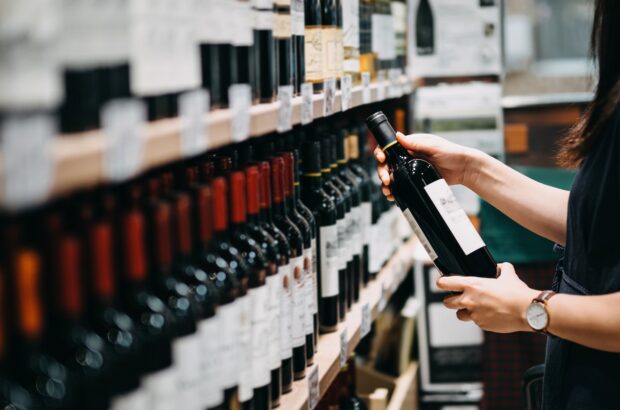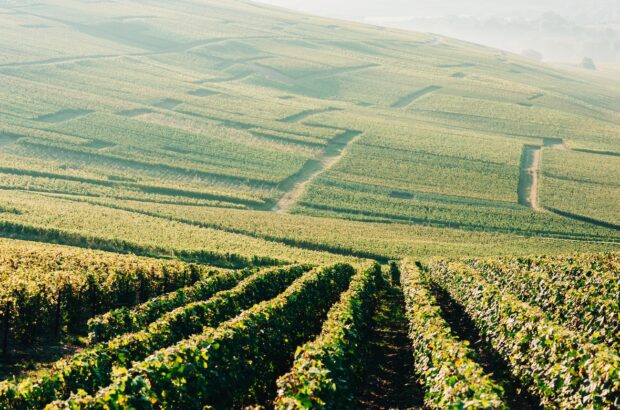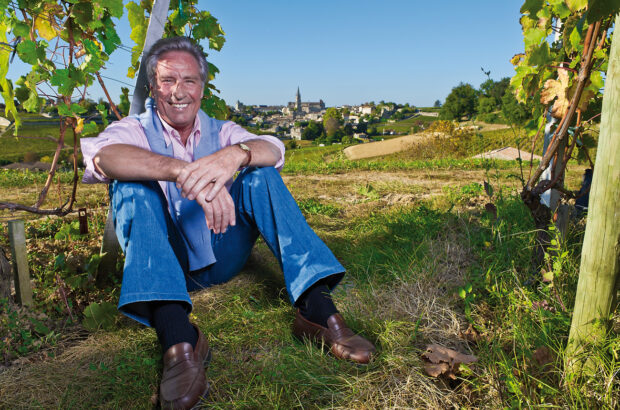As much of France reels from one of the toughest growing seasons of recent times, Champagne was still holding on to some quiet optimism as harvest continued through September.
Quiet, that is, because yields are low and maturity unpredictable. Optimistic, though, because outside of the Aube in Champagne’s south, Reims and the Marne Valley in the north have largely made it through with a modest yield on the vines, ripening through a much-needed dry spell in mid-September.
After the gigantic, botrytis-affected 2023 vintage, yields were always going to look smaller this year, even before the travails of the weather took their toll.
‘There were two to three bunches less per vine this year,’ said Louis Roederer’s cellar master Jean-Baptiste Lécaillon. ‘There was a lot of fruit to ripen in 2023, so maybe the vine directed its energy to last year, but not this year’.
Mother nature doubled down, handing out spring frosts that caused up to 80% loss in parts of the Côte des Bar in late April. At Alexandre Bonnet in Les Riceys, there will be no Rosé de Riceys made this year – the first time since 1991.
Hail hit the Marne Valley, home to much of Champagne’s Meunier, on 12 May, affecting around 500ha of vineyards.

Harvest at Champagne Drappier 2024. Credit: Champagne Drappier
The unifying story, however, is of downy mildew. ‘We weren’t hit so badly by the frost,’ said Hugo Drappier of Champagne Drappier in Urville in southern Champagne’s troubled Côte des Bar. We looked out over vineyards carrying barely a tenth of their usual yield. ‘But we were hit worse by the mildew,’ he said.
Downy mildew entered flowers and young grapes at the end of June and into July. Unlike for the leaves, which the vine can replace or partially save, this is terminal for affected bunches.
Although there was crop loss in the Marne Valley, the mildew was the worst in working memory for many in the Aube, with possible implications for the region as a whole; much of Champagne’s red wine destined for rosé production is made in Les Riceys, and there will be much less to go around this year.
Ordinarily, downy mildew is controlled either by copper-based sprays, used by organic producers and requiring constant re-treatments, or systemic fungicides used by non-organic producers. If organic viticulture is seen as more challenging, then the sheer pressure of the year has eventually landed everyone in the same boat. In fact organic viticulture, as it did in 2023, seems to be coping well in skilled hands: ‘Our organic trials were good this year, but if you missed a treatment in the vineyards then it’s gone!’ said Émilien Boutillat, cellar master at Piper-Heidsieck.
Surprisingly, Meunier in the Marne Valley was not the primary victim of rainfall, as Perrier-Jouët’s cellar master Séverine Frerson explained: ‘The Meunier in the Marne Valley is better than last year, the characteristic this year is fruitiness and freshness, we could have a very good vintage.’
Charles Philipponnat of Champagne Philipponnat agreed that it is a ‘healthier’ year than 2023, because while downy mildew can affect the yield, it does not necessarily affect quality.

Harvest at Champagne Philipponnat. Credit: Champagne Philipponnat.
Somewhat more predictably, Chardonnay, despite being later to ripen, seems to have yielded better, possibly missing the troublesome weather at flowering.
‘I’m confident for some beautiful Chardonnay this year,’ said Vitalie Taittinger of Champagne Taittinger, despite a little more reticence on the Pinots. A walk through the Côte des Blancs revealed limited mildew damage and moderate yields on Chardonnay, although maturity is extremely heterogeneous.
The damage in the Aube, together with lower yields overall, will have consequences that are slow to work their way through. Champagne’s unique réserve interprofessionnelle system (formerly known as a réserve individuelle) – whereby a certain amount of wine can be held back from the previous harvest in case of low yields, blocked from being bottled as Champagne by the authorities and kept at a rolling maximum of the equivalent of 10 tonnes per hectare – will be important this year.
Those with almost no grapes will be forced to use almost all of these reserves to make their wines, meaning there will be little in reserve for next year should the weather gods prove equally unkind. Those who put their inferior wines from 2023 into reserve, hoping to swap them out for better ones this year, will face a tough choice as to whether to use them or take the hit and sell them on.
After the sting in the tail of 2023, however, the mood in most of Champagne remains upbeat – even if growers will be hoping that 2025 gives them an easier ride.







